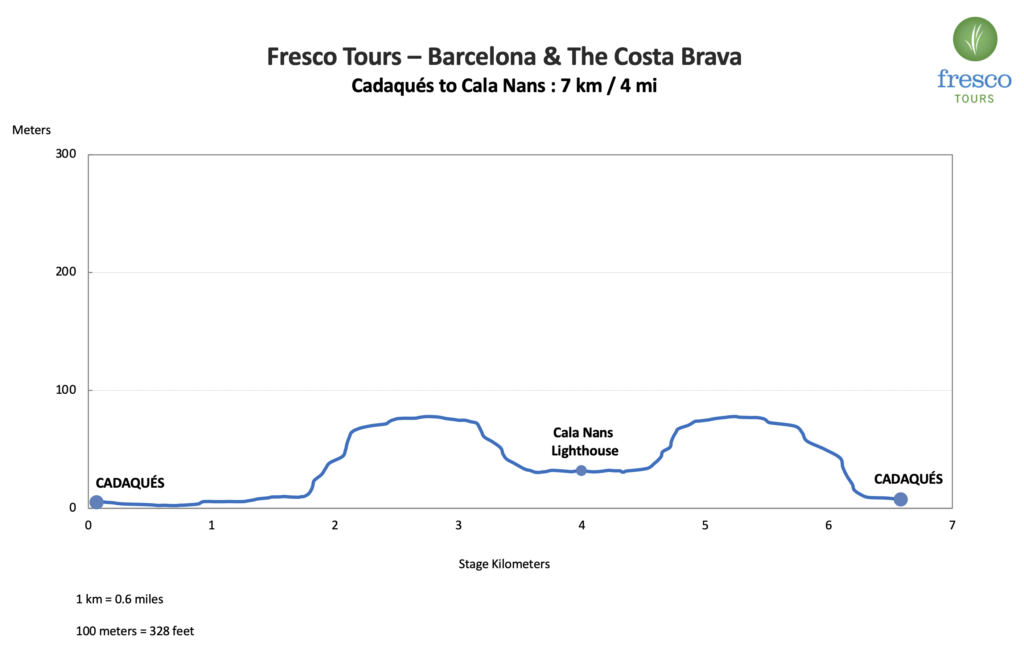Today we explore Sant Pere de Rodes Monastery & Cadaqués.

Sant Pere de Rodes
Sant Pere de Rodes is a historic Benedictine monastery located on the slopes of Verdera Mountain in Cap de Creus Natural Park. The origins of Sant Pere de Rodes date back to the 9th century and was active up until the end of the 18th century.
The architectural style of Sant Pere de Rodes is predominantly Romanesque. The complex includes the church, cloister, bell tower, defensive walls, and other structures. The monastery is situated on a hill overlooking the surrounding landscape, offering panoramic views of the sea, mountains, and the surrounding countryside. Its strategic location served both religious and defensive purposes.
Sant Pere de Rodes played a significant role as a religious and cultural center during the medieval period and received pilgrims who travelled to pay their respects to the relics kept at the monastery or on their way to Compostela. Today, Sant Pere de Rodes is part of the Catalan Camino de Santiago. Back then, it housed a community of Benedictine monks and served as a place of worship, education, and manuscript production. Still visible today are the hillside terraces that were once harvested. For several centuries, wine was the monastery’s major source of revenue.
The monastery, however, faced periods of decline and abandonment over the centuries, particularly during times of political and social upheaval. The monastic life there ended in 1798, and the monastery was abandoned. In the 20th century, efforts were made to restore and preserve the site, recognizing its historical and architectural importance. Today, Sant Pere de Rodes is open to visitors, offering a glimpse into its rich history.

Cadaqués
Cadaqués is often referred to as the jewel of Costa Brava. Its whitewashed buildings facing the tranquil bay makes the perfect picture.
The village has always been isolated due to its location, landlocked in between the Pení Mountain and the sea. Cadaqués first documents date back to the 9th century, and was absorbed by the Empúries County as part of Sant Pere de Rodes Monastery in the 11th century.
In the 15th century, the local economy based on agriculture and fishing was constantly threatened by pirates, the village prevailed thanks the construction of the walls that protected the old town presided today by the 17th century Santa Maria church.
Later, in the 19th and 20th centuries, many villagers travel to America in search of a better life. They popularly known as Indianos or Cubanos (as many chose Cuba) and some came back with their fortunes and build impressive mansions that we can still admire today.

Cadaqués started to attract artists from all over the world such as Eliseu Meifren, Picasso, Duchamp, Max Ernst, Magritte or Antonio Pitxot. However, the most important artist connected to Cadaqués is Salvador Dalí who also open Cadaqués to artists like Paul Eluard and his wife Gala, Federico García Lorca, Luís Buñuel, Richard Hamilton and Walt Disney among many others.
In the 1960s when Spain opened to tourism, the local economy changed. The agricultural and fishing industries turned their heads towards the more lucrative tourism.
Nowadays, Cadaqués is one of the most beautiful villages in Spain and it is eternally connected to the genius Dalí as he had his residence in Portlligat.







